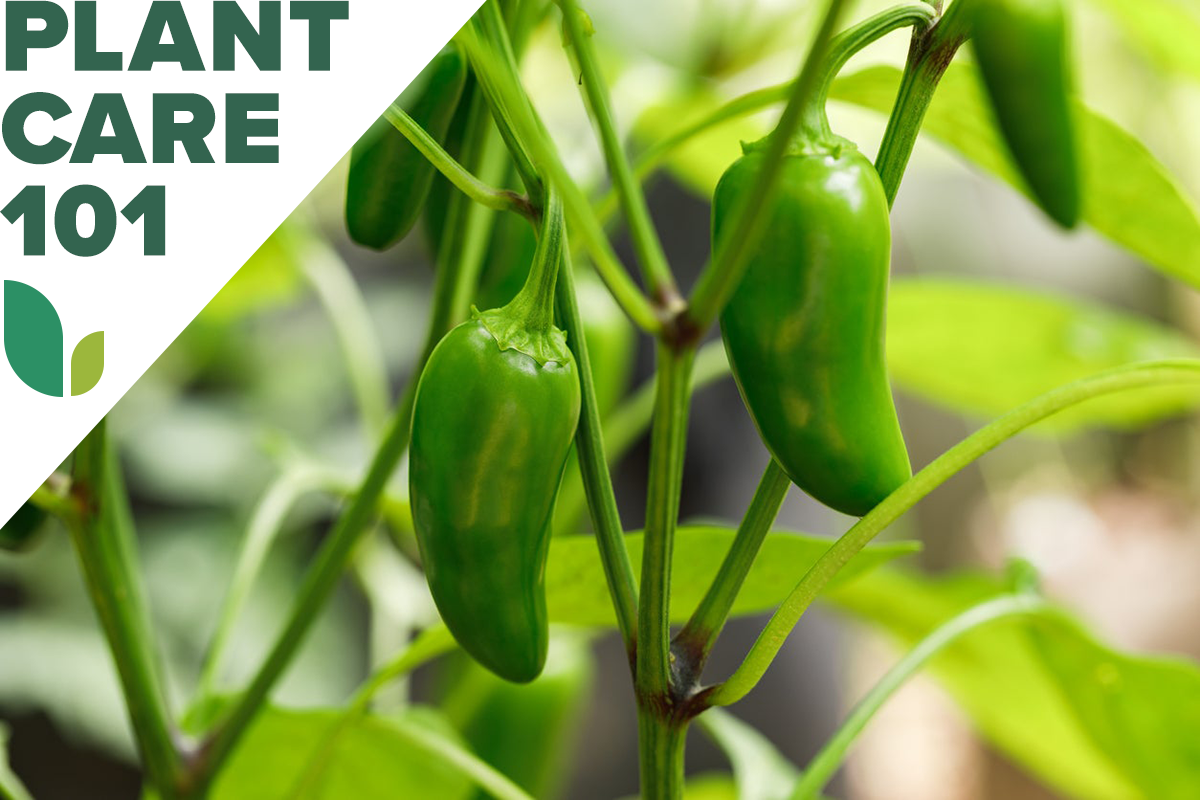

We may earn revenue from the products available on this page and participate in affiliate programs. Learn More ›
Jalapeños are among the most popular peppers, especially in U.S. gardens and kitchens and extensively throughout Mexico, the country of its namesake city, Xalapa. The versatile pepper has just enough kick to spice up appetizers, salsa, and other dishes. They’re also popular pickled and canned or smoked and dried to make another popular pepper: chipotle.
The directions for how to grow jalapeños aren’t difficult, as long as you keep in mind that cold is anathema to these “flaming” fruits. Give them lots of sun and heat on the outside to get lots of heat on the inside!
RELATED: The 16 Easiest-to-Grow Vegetables for Novice Gardeners
Growing Jalapeños at a Glance
Common Name: Jalapeño pepper
Scientific Name: Capsicum annuum (Longum group)
Hardiness Zone: 9 to 12
Soil: Sandy, well-draining, pH 6 to 6.8
Light: Full sun
Water: Medium
Food: Organic tomato fertilizer
Propagation: Seeds
Safety: Edible; can burn skin, eyes, and mouth
Jalapeño Characteristics
Peppers are native to Central and South America where they might be perennials in frost-free climates. A full grown jalapeño plant can vary in height from 1 foot to 4 feet or more with glossy but simple (lanceolate) green leaves. Jalapeños typically produce narrow dark green fruits—yes, scientifically fruits rather than vegetables—2 to 3 inches long. The fruits ripen to red if left on the plant long enough. Peppers from the Mammoth cultivar grow to almost 5 inches long.
Though their zing registers at 2,500 to 8,000 on the Scoville scale, jalapeños aren’t the hottest types of peppers. That distinction goes to habaneros, ghost chiles, and—ultimately—the Carolina Reaper pepper. Of course, if you would prefer to dispense with the kick altogether, you should opt for sweet peppers instead.
Recommended Jalapeño Varieties
- Jalapeño Traveler: This open-pollinated type grows to 3 feet with 3-inch peppers within 85 days.
- Mammoth: This mammoth jalapeño hybrid plant also tops out at 3 feet, but makes fruits up to 4¾ inches long within 75 days.
- Pot-a-peno: This jalapeño pepper plant, a hybrid bred especially for containers, grows to only about 15 inches high and reportedly begins producing 3 to 4-inch fruits within 45 to 50 days.
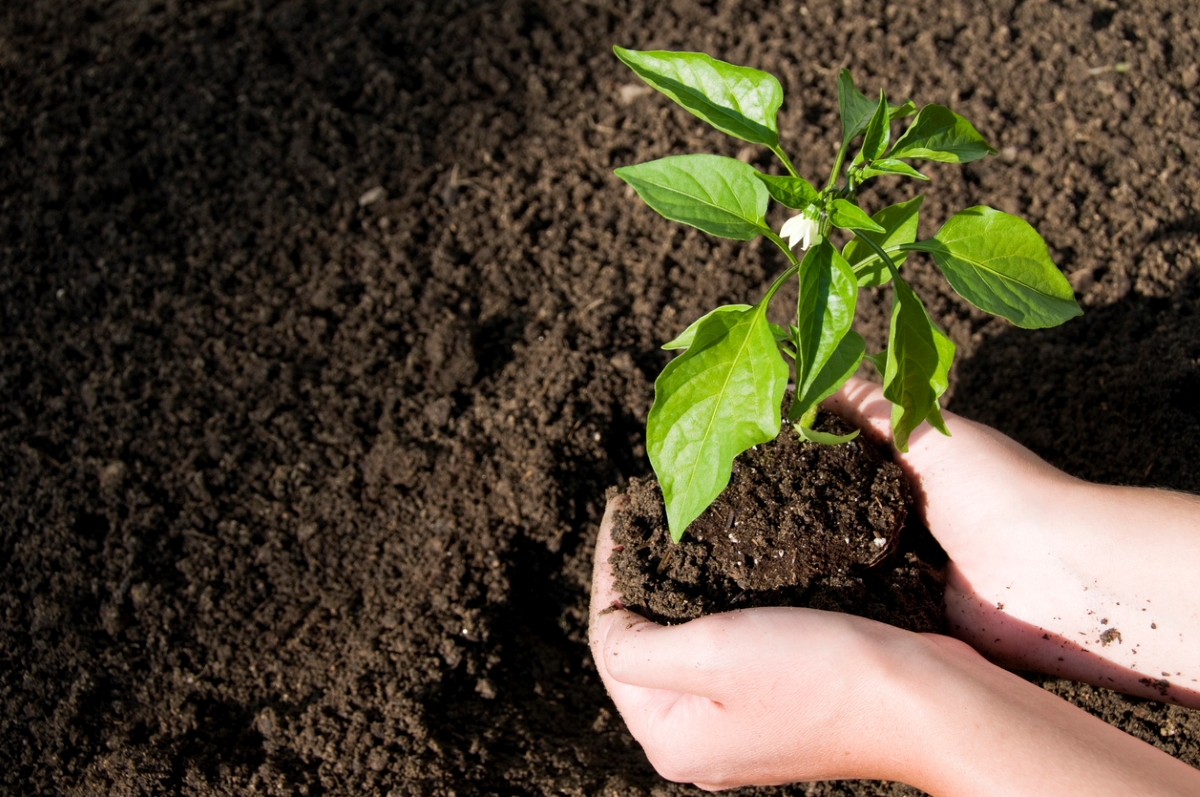
Planting Jalapeños
Gardeners with short growing seasons should sow pepper seeds indoors about 2 months before they intend to set the seedlings outdoors or purchase already started plants from a local nursery.
When is the best time to plant jalapeños?
Don’t transplant your peppers into the garden until all danger of frost has passed and nighttime temperatures stay above 55 degrees. In the meantime, spread organic tomato fertilizer and a few inches of compost over your pepper plot. After spading in those additives and ensuring that the ground is damp but not soggy, cover the plot with black plastic mulch to heat the soil quickly.
Where can jalapeños grow?
When growing jalapeños, choose a location with well-draining (preferably sandy) soil that receives at least 8 hours of sunlight per day. That soil should be slightly acidic with a pH between 6 and 6.8. Avoid any location where other nightshade family vegetables, such as tomatoes or eggplant, have grown within the past couple of years.
How do you plant jalapeños?
Harden off your jalapeño seedlings for at least a week before planting them so they can adjust to their outdoor conditions.
- Cut planting holes in the black plastic mulch with which you have covered your pepper plot, keeping in mind that jalapeño plant spacing should vary between 1 and 2 feet, depending on the ultimate size of the pepper plant you have chosen.
- After removing a jalapeño plant from its container, gently ease apart any tangled roots and plant it in one of the holes, slightly deeper than it was growing before, so that no more than the lower third of its stem is covered.
- Water the seedlings enough so that their soil remains slightly moist but not soggy as they establish themselves.
Can you grow jalapeños in containers?
As for growing jalapeños in pots, a pepper plant can thrive in a container, as long as the container is large—at least a 5-gallon size—and the plant is a small one such as Pot-a-peno. Penn State Extension recommends that you plant your compact cultivar in a 14-inch diameter pot in a mix of composted pine bark, peat, and perlite.
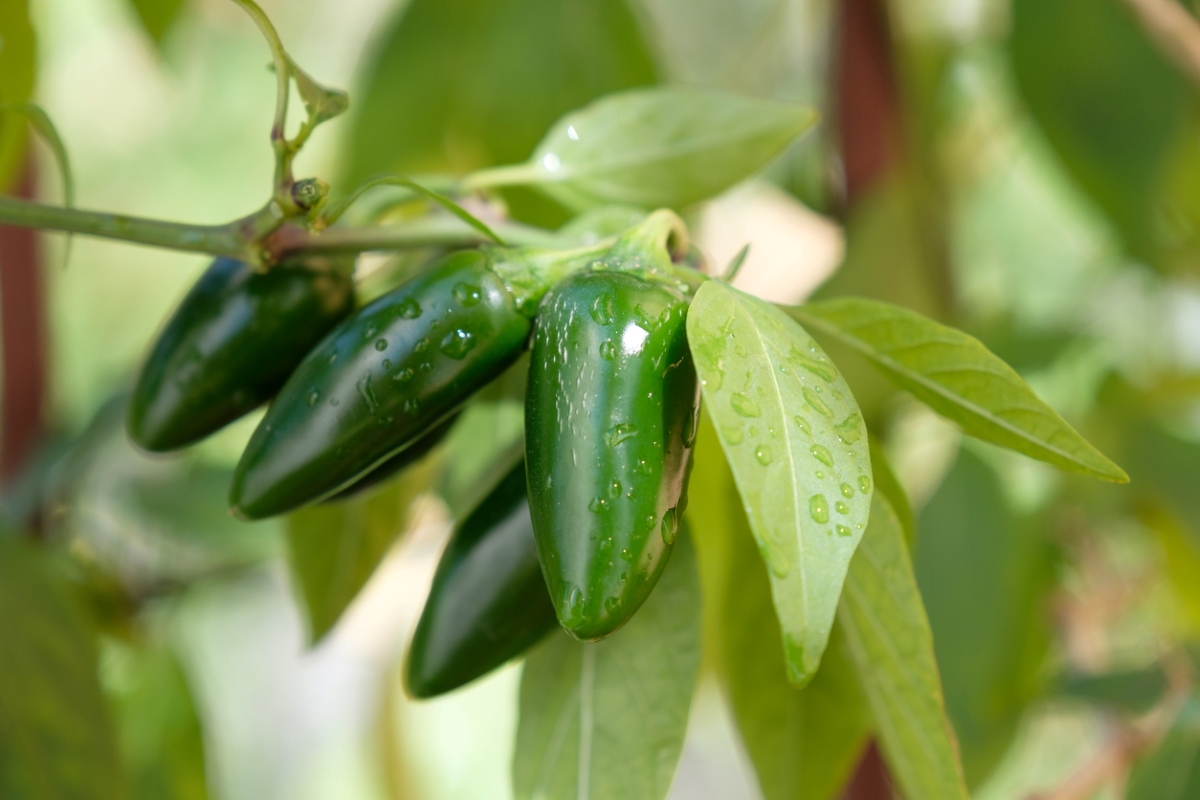
Watering Jalapeño Plants
As with most vegetables, peppers should receive at least 1 inch of rainwater per week—or its equivalent from drip irrigation or soaker hoses. If you grow your plants in plastic mulch, you might need to use drip irrigation or a watering can with a convenient spout to direct moisture to their roots through the holes in the mulch. However, avoid saturating the soil to the point of sogginess; an overwatered pepper plant may succumb to root rot.
Fertilizing Jalapeños
The best pepper fertilizers often are the types intended for tomatoes, a sweet fruit, but one in the same family as peppers. Add an organic high-potassium tomato fertilizer such as 3-4-6 (at a rate of 3 pounds per 50 square feet) to the soil before planting peppers. If you think they need additional feeding, give them 3 tablespoons of the fertilizer per plant every 2 weeks after their transplanting, watering it into the ground at least 3 inches out from the plants’ stems. For potted plants, use 4½ teaspoons for a 12-inch diameter pot, 6 teaspoons for a 16-inch one, etc., also keeping fertilizer away from the stems.
RELATED: Why You Should Hand-Pollinate Some of Your Veggies This Year—and How to Do It
Pollination
Peppers are self-pollinating, so you won’t require more than one to ensure that you get fruits. Bees and other insects usually will carry pollen from the stamens to the stigmas of the inconspicuous white flowers. However, you can help the pollination process along by flicking the backs of the blooms occasionally or by dabbing their centers with a soft paint brush to encourage the pollen to spread. Keep in mind that pollination and fruiting often slow during unusually hot or unusually chilly weather.
Pruning Jalapeño Plants
Once your peppers reach 1 foot high, grit your teeth and lop off leaves, blossoms, and fruits down to the second set of leaves. According to the University of Illinois Extension, this should give you sturdier and more productive plants than you would have otherwise, but pinching off early blooms and growth can be controversial. It depends on your climate and other factors, so check with a local source if you’re unsure. After the plants make a comeback and reach 2 feet, remove all the leaves from the lower 1 foot of their stems to help prevent diseases that originate in the soil from splattering the lower foliage.
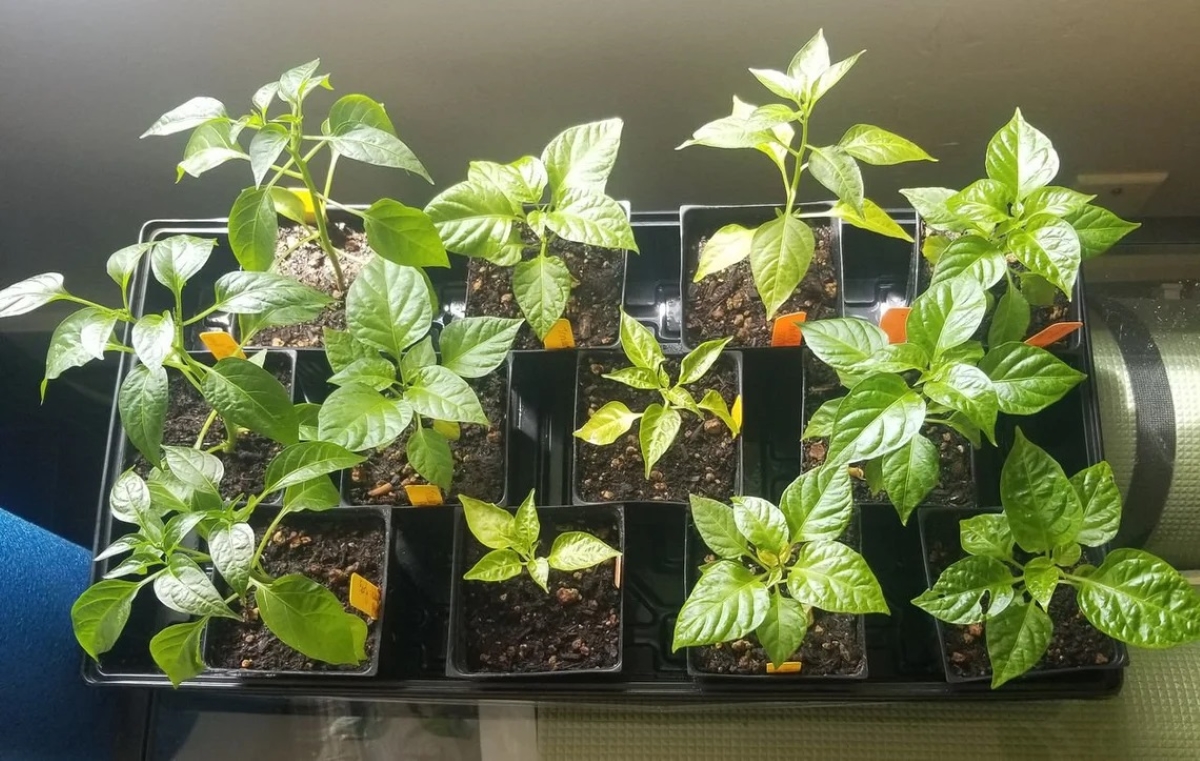
Propagating Jalapeños
Sow jalapeño pepper seeds ¼ inch deep in damp and sterile seed starting mix. Then place their container atop a heat mat to keep the temperature at 80 to 90 degrees Fahrenheit until the seeds germinate, typically in 6 to 10 days. When you see sprouts, place the container under the center of a grow light or shop light with the tips of the seedlings close to the bulbs. Transplant the seedlings into other containers when they have four leaves each.
Safety Considerations
Poison Control warns that, although not deadly, “too much hot pepper can result in nausea, vomiting, abdominal pain, diarrhea and a burning sensation when ingested.” You also are likely to “feel the burn” if you touch your eyes or other sensitive areas just after you have been slicing jalapeños.
Therefore, It’s a good idea to wear disposable gloves when doing such chopping and to clean your knife and cutting board immediately afterward. To quell the burning in your mouth or on your skin caused by contact with jalapeños, sip or apply a coating liquid such as milk rather than water.
RELATED: 10 Plants That Grow Better with Companions
Potential Pests and Diseases
Peppers can suffer from the same blossom-end rot that affects their tomato “cousins.” You can help prevent that by keeping their soil evenly moist, since the problem often is due to erratic watering rather than an actual calcium deficiency.
Jalapeño plants also may become stunted and never fully recover if set out too early while night-time temperatures still are chilly. Low temperatures don’t necessarily need to drop to the freezing point to adversely affect heat-loving peppers.
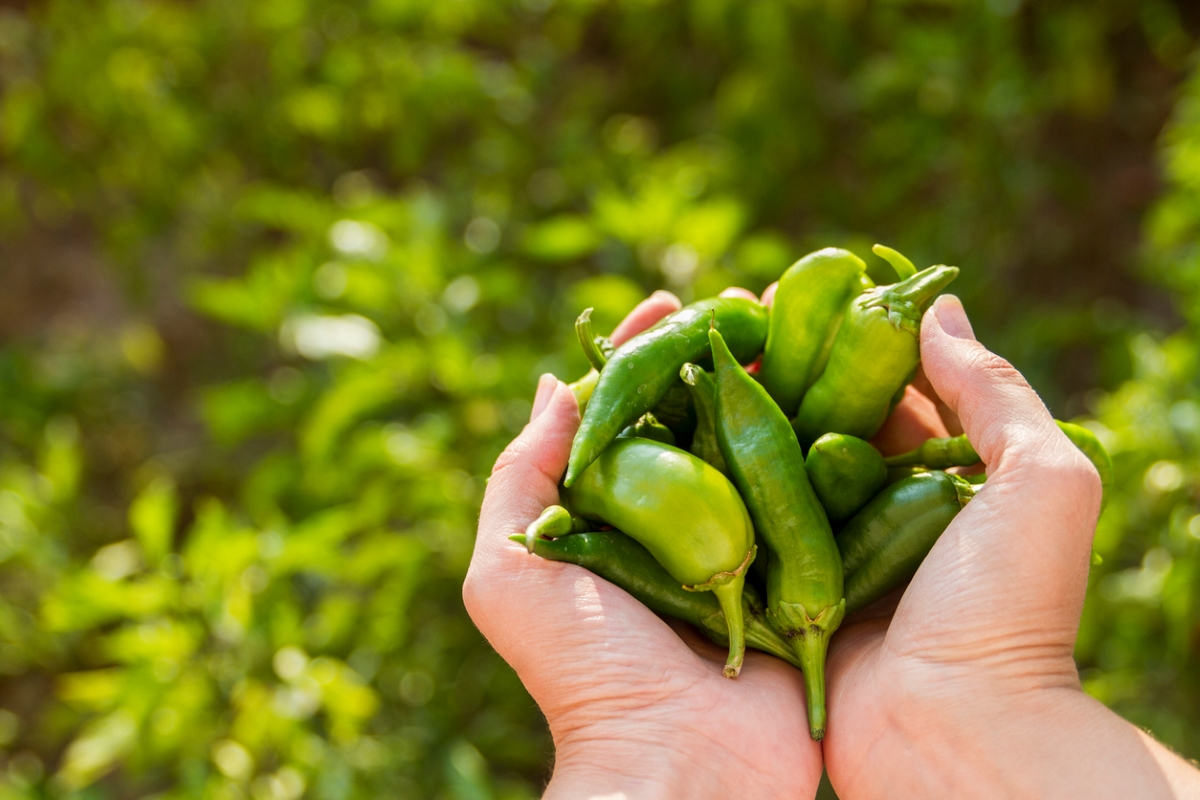
Harvesting Jalapeños
Pick your peck of (non-pickled) peppers in late summer in most regions. Jalapeños are ready for harvest when they feel firm, look dark green or even red (for hotter peppers), and are close to the stated mature fruit size.
When is the best time to harvest jalapeños?
You generally should be able to harvest peppers about 75 to 85 days after you transplant the seedlings into your garden, but check the seed packet or plant tag and signs of fruit readiness. You may want to wait until about 10 percent of the fruits begin to turn red to assure yourself that they are mature. However, you can harvest them while they are still green. You should be able to harvest several times during a growing season.
How do you harvest jalapeños?
Use garden shears or pruning shears to harvest your peppers.
- Wearing gloves to protect your hands, snip each pepper about ½ inch above its cap.
- Roll up the peppers in paper towels and place them on a shelf in your refrigerator until you wish to use them.
- Before eating your peppers, wash them under cold running water, rubbing and rinsing them thoroughly.
How do you store jalapeños?
You can store peppers for about a week in your refrigerator at a 40-degree temperature. Although they keep better at 45 to 55 degrees, that is too warm for home refrigerators. Alternatively, you may wish to experiment with pickling or drying peppers to eliminate the need for cold storage.
Looking for more sun-loving vegetable plants? Check out our guides on growing artichokes, corn, and sweet potatoes.
